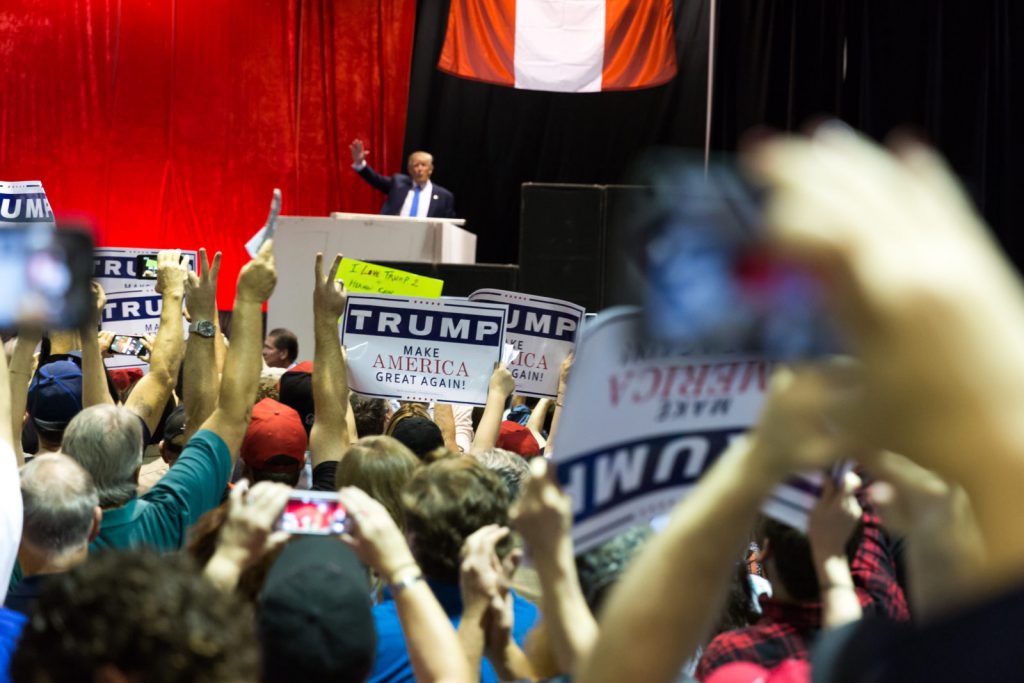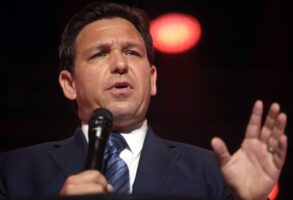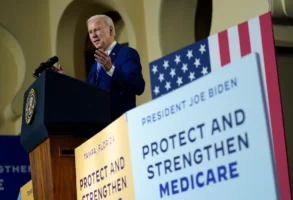
Published May 11, 2016
National Review - May 9, 2016 issue
It is tempting, if disheartening, to believe that Donald Trump has irrevocably changed the GOP for the worse, imperiling conservatism’s hold on the party. But he hasn’t. The same dynamics and fissures that existed prior to this cycle remain intact today. Trump’s armies do, however, constitute a new “fifth faction” that now competes with the GOP’s traditional “four factions” for party dominance. This new faction is not wholly unconservative. It is instead a forceful reassertion of a kind of conservatism that has long lain dormant.
“Trumpism” is best understood as a resurrection of the conservative ideas of nationality and citizenship. Trump’s success shows how important it is to reincorporate these neo-Kirkian strands into modern conservatism, thereby creating a new fusionism that can command a national, conservative majority.
Republican nominating contests prior to this year were primarily battles between four factions. Two of these groups tended to identify as “very conservative.” Evangelicals constituted about 20–25 percent of the GOP electorate, and they liked candidates who focused on giving their religion a role in public life. Another 10–15 percent of GOP voters were hard-line fiscal conservatives, and they liked candidates who talked about cutting taxes and lowering spending.
The other two of the traditional four factions, often referred to as the “establishment,” were actually distinct groups with different priorities. Moderates, who accounted for about 30 percent of the national party, always liked candidates who downplayed religion’s public role and favored making government work over cutting it. “Somewhat conservatives,” the largest group of the four, were the remaining 35–40 percent of Republican voters, and they backed candidates whom movement conservatives considered “moderates”: Bob Dole, George W. Bush, John McCain, Mitt Romney. Though they were not the preferred choice of the party’s “very conservative” factions, these men stood farther right than moderates would have liked, endorsing movement-conservative goals such as lower taxes and a strong national defense.
Trump’s coalition does not fit neatly into this paradigm. Although he does better with the two “establishment” factions than with the two “very conservative” ones, his support is strong in all four groups and seems to be driven by class more than ideology: The less formal education one has, the likelier one is to back Trump. The group that likes him the most has never been to college, and the group that likes him the least has post-graduate degrees. Since the race now seems to be defined in terms of whether one is for or against Trump, some pundits have contended that he has completely upended the party and made old distinctions irrelevant.
A closer look at the data shows that this isn’t quite so. Support for the non-Trump candidates has broken on exactly the ideological lines that the “four factions” theory would predict. Cruz has done very well among very conservative Evangelicals and almost as well among very conservative seculars. Marco Rubio ran strongest among somewhat conservatives, while John Kasich has racked up large margins among moderates who don’t back Trump. The real-estate developer has not renovated the GOP; he has simply built an addition to its existing structure.
Many conservatives think that this addition threatens their principles, because Trump voters are out of sync with some of the sentiments that dominate today’s conservative movement: They are suspicious of, if not opposed to, free-trade agreements and entitlement reform; they are not strongly pro-life; and they question the sort of foreign military intervention many strong conservatives favor. But this does not mean that Trump voters are unconservative; it simply means that they sing from a different hymnal than the one distributed in today’s conservative church.
Their hymnal is one of nationalism and citizenship. Virtually every one of the major concerns that move Trump’s voters can be tied together under the idea that America is an entity that exists apart from voluntary arrangements of its residents, and that this entity obligates all of its members to act on behalf of all the other members. In this view, citizenship is not simply voting and paying taxes: It is a membership by birth in a body that demands things from everyone and in return protects and supports everyone.
This view will strike many readers as odd, given the by-now-ossified conventional wisdom that Trump’s support is based on his extreme anti-immigrant rhetoric, his ability to tap the GOP base’s anti-establishment fervor, and his persona. But the exit-poll data show that none of these assumptions is quite true: Trump’s appeal contains these elements but largely transcends them.
The immigration argument is easy to refute. Exit polls regularly ask which of four issues is the most important to GOP voters, and immigration almost always ranks last, with just 8–12 percent of respondents. Trump does capture most of these voters — he normally gets between 50 and 70 percent of them — but they are a small share of the electorate, and the bulk of his supporters think some other issue is more important. Nor does his advocacy of deporting illegal immigrants explain his rise. The exit polls show that there are only two states, Alabama and Mississippi, where a majority of Republican voters favor deportation. Trump normally wins only a bit more than half of such voters, and in virtually every state, about half of his backers oppose deportation.
Anti-establishment fervor is also overstated as a cause of Trump’s rise. One exit-poll question asks whether voters prefer someone with political experience or someone from outside the establishment. While a majority normally prefers the outsider, and Trump wins about two-thirds of that vote, this is a classic chicken-or-egg question. Do voters want an outsider and then choose Trump, or do they like Trump and then say they want someone without political experience? A better gauge of the depth of anti-establishment fervor is to ask whether voters feel “betrayed by Republican politicians.” A majority say they do, but Trump does not fare much better among these voters than he does among those who say they don’t. Indeed, in five of the 14 states where the question was asked, Trump ran better or as well among those who did not feel betrayed by Republican officials.
Trump’s persona doesn’t explain his success, either. Exit polls ask voters what quality they find most important in a candidate, and one of the options is “tells it like it is.” We should expect this to be one of the most popular answers among Trump’s supporters if they were primarily attracted to his brashness. It is not. It almost always ranks third, just ahead of electability, and is usually mentioned by about 20 percent of all voters. Trump does clean up with that 20 percent — he usually gets around 80 percent of the vote among those who prefer someone who “tells it like it is.” But fewer than half of his voters overall choose that answer.
A larger share of Trump’s vote comes from people choosing another quality, the one that often finishes first or second: “can bring needed change.” About a third of all voters select this quality on average, and Trump usually gets about half of their votes. Indeed, these voters are so important to him that he always either loses or wins quite narrowly when he gets fewer than 45 percent of their votes. Those who want to understand Trumpism, therefore, must understand the nature of the change Trump’s voters want him to bring.
We can do so by looking for the common thread that ties together the issues those voters care about: a perceived failure on the part of government to protect vulnerable Americans from threats to their way of life.
With immigration and trade, the danger is economic — Americans (in the view of Trump voters) are losing jobs and wages to competition from foreigners, and the people who run the country prefer profiting from that competition to protecting workers who are harmed by it.
The stakes are felt to be much higher with Trump’s proposed indefinite ban on Muslims’ entering the United States: The perceived danger is to life itself. Trump voters believe they are threatened by Islamic terrorism. If Muslims come to America, they think, Americans will be more likely to die. Trump’s proposed ban seems to them to be common sense: The first duty of a national government is to protect its citizens from foreign threats. One must not underestimate how important the proposed ban is to Trump’s voters and to his appeal. Trump’s national poll numbers were stuck in a narrow band in the mid 20s prior to the Paris and San Bernardino terrorist attacks, according to the RealClearPolitics averages. He started to move into the high 20s immediately after the Paris attacks, and his appeal skyrocketed after he proposed the ban on December 7. Polls taken after that date show him in the mid to high 30s, a position of dominance that he has held ever since.
The exit polls confirm this interpretation. The ban is highly popular among Republican primary voters, with between 63 and 78 percent approving it in every state where the question was asked. Trump normally wins between 45 and 50 percent of these voters. But this actually understates the import of the issue to his candidacy. Between 80 and 90 percent of his voters back the ban, meaning that it unites his backers more than any other concern.
This fact helps us understand the change his voters want. Opponents of Trump’s views on immigration, trade, and a ban on Muslims’ entering the United States often use individual-based arguments to justify their views. Immigration is needed because individual employers need to contract with individual workers. Free trade is good for individual companies and consumers, and for the (often foreign) individuals with whom they trade. The rights of individual Muslims in America outweigh the concerns of native-born Americans about their safety. The implicit understanding conveyed by many in the “never Trump” movement is that the country is little more than a land mass containing individuals rather than an entity with obligations to, and capable of imposing obligations on, those who belong to it.
Trump voters disagree with this view. The America they want to “make great again” is not a land mass, a large, rules-based network that lets individuals coordinate with minimal transaction costs. It is instead a place, a people, a nation. Trump voters believe that they have upheld their side of the American social contract, while others — businessmen, politicians, journalists, professors — have violated it.
In past generations, American conservative philosophy and political leadership incorporated this strand of thinking into the movement. Writers such as Russell Kirk and Edward Shils would remind us that society has organic, primordial elements that no culture of individuality can erase. Leaders such as Ronald Reagan subtly weaved this element of thought into their invocations of American nationality. The “boys of Pointe du Hoc” were worthy of praise not because they individually made courageous choices, although they clearly did in the heat of battle. They were worthy of praise because they did their duty, they fulfilled their end of the national bargain. Reagan’s appeal to Americans, especially to the so-called Reagan Democrats, rested in part on the notion that he would always commit the country to fulfilling its end of the deal.
Recapturing Reagan’s blend of American individualism and American nationalism will be difficult but not impossible. A conservative movement that can achieve this goal will not only heal a fractured party; it will also create a not-so-silent majority and win many elections to come.
– Mr. Olsen is a senior fellow at the Ethics and Public Policy Center.








